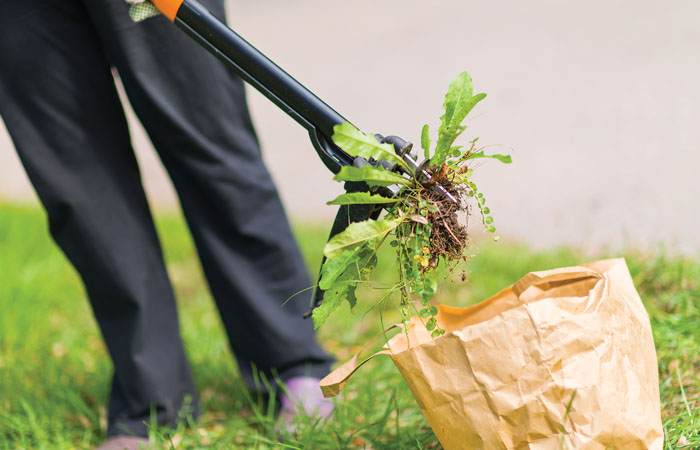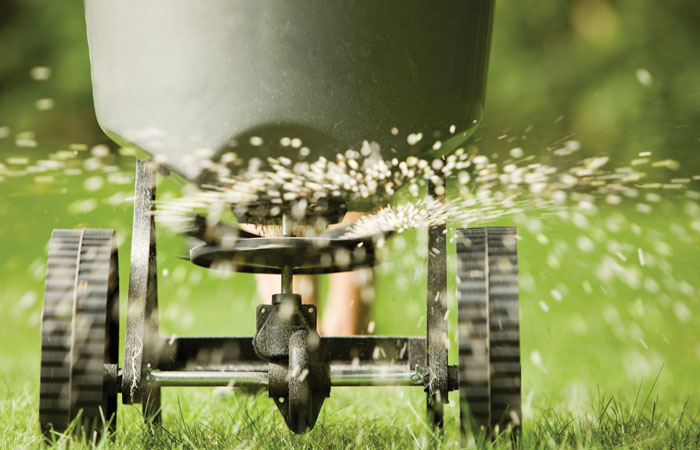Happy Holidays, avid golfers! We have made it to the last month of the year and, as golfers, we know that on December the 21st we mark the shortest daylight day of the year. After that, we start gaining a bit of extra daylight every day, and that means more golf.
This time of year, I have historically been covered with questions around the clubs dealing with live (plant) Christmas decorations and how to choose and care for them. I will include the top choices for live Christmas trees as an extra in this month’s column, and if you have questions specific to the live Christmas decoration theme just take a look at past December editions in the AVIDGOLFER archive or shoot me an email at Anthony.williamd98@att.net.
This month’s question comes from several clubs, and it’s a great one. Do I need to water my lawn and landscape during the winter months? The short answer is yes, but as always there are many factors to consider. So let’s take a look at some winter watering guidelines.
What is Desiccation?
Desiccation, in basic terms, is what happens when a great deal of moisture is removed from a substance. Whether that substance is a gas or a solid, it’s the same process. When we talk about desiccation or winter desiccation in plants, we’re specifically referring to the transfer of excessive amounts of water from leaves and into the atmosphere. This is a normal part of the plant’s respiratory functions, and losing small amounts of moisture is usually not a problem since plants are also bringing in new fluids from their roots at the same time. However, if the ground is frozen and water uptake is limited, that situation starts to be problematic. Add some strong winds that further dry out plant tissues, and things can become quickly lethal to the plant. Desiccation is a major factor in winter damage to plants. The last few winters in DFW have been hard on plants, but a healthy well-watered plant has the best chance of survival.
Now that you understand some of the physical stresses that are at work during the winter, let’s take a closer look at the strategies to keep your lawn and landscape properly watered in the winter. The key takeaway here is that proper winter watering will help your plants survive winter stresses and help prevent desiccation.
Winter Watering Basics
During winter, plants require less water than they do in the spring and summer, but they do need well-timed watering. Generally, we use the one-inch of water per week as an average that could move up or down based on soil type, temperature and wind. Remember, irrigation is a supplement to natural rainfall, so be aware of how much rain has fallen or is forecasted to fall when managing your irrigation needs. Try to water deeply several times per month. Trees and larger plants should be watered from the trunk outward toward the dripline, as feeder roots can extend beyond the dripline and plant uptake of the water is key. Smaller shrubs, flowers and lawns can be watered over the top of the plant on a similar schedule. As a rule of thumb, water when the soil is dry to the touch, or you can use a moisture meter for the technical-minded. Or for old sage gardeners, there is also the screw driver test where if you cannot easily push a standard screw driver into the soil, it’s time to water. Whatever method you use, watch the results and adjust as needed.

Temperature is a big factor in watering and water needs in plants. The temperature should not be below 40°F (4°C) when you water. Try to water when the wind isn’t blowing, as wind can significantly impact the amount of water delivered to a given area depending on wind direction. The timing of watering before severe cold temperatures is critical. Keeping your plants hydrated consistently and getting water into plant tissues before a winter storm arrives has tremendous impact on the survivability of the plants, lawns and trees. Even dormant warm-season grasses, such as Bermuda and Zoysia, require winter watering.
Areas of Concern
There are a few areas in the landscape that are more prone to winter damage and desiccation than others, so they will need a bit more attention when it comes to watering over wintering. The first area that always takes the worst damage from winter stresses, especially in lawns or turf, are north-facing slopes.
There are several reasons for this. First, slopes are tough to water consistently, as the higher areas are often drier, and the lower areas can be too wet. Watering with a cycle approach on slopes can help, where you water several times with less water instead of one single watering to allow water to be absorbed without runoff. North slopes are also more shaded in the winter due to the sun angle (shade cast in these areas are the last to thaw during snow/ice), which increases the management required to keep the plant healthy. These slopes are also exposed to direct-line winds, and many times it’s the combination of the drying wind coupled with extended cold that kills the plants.
Extra attention to watering these areas can mean the difference between survival and winter kill. The takeaway here is to note areas that are more prone to winter stress damage and adjust your watering and other plant health strategies (fertility, plant choices) accordingly. Taking pictures and keeping a landscape/garden journal can really help take the guesswork out of the process and document successes and/or failures.
We now interrupt our scheduled content for the promised bonus feature.
Bonus Feature
Top Five Live Christmas Tree Choices
Balsam Fir: Is very fragrant, making it the most popular Christmas tree variety.
Douglas Fir: A very common variety, favored for their perfect conical shape and fullness. Lots of branches to hang ornaments from.
Fraser Fir: Recognizable by their needles, which are dark green on top and silver underneath.
Scotch Pine (or Scots Pine)
Colorado Blue Spruce: noted for its texture and blue color.
Honorable Mention: Eastern White Pine, Red Cedar, Noble Fir and Leyland Cypress

Conclusions
When it comes to watering your landscape and lawns, making every drop count is important. While we water much less in the winter, the amount and timing of the watering can help our plants survive even a legendary Texas winter.
I hope that you found this information valuable and thank you for being a loyal reader. We wish you Happy Holidays, avid golfers, and as always be sure to play golf as the weather allows.
Anthony L. Williams, CGCS, CGM, MG is a certified Master Greenkeeper and an award-winning environmental author with a degree in Horticulture. He is currently a Regional Director of Agronomy for Invited Clubs based in Dallas, Texas. He can be reached at Anthony.williams98@att.net.